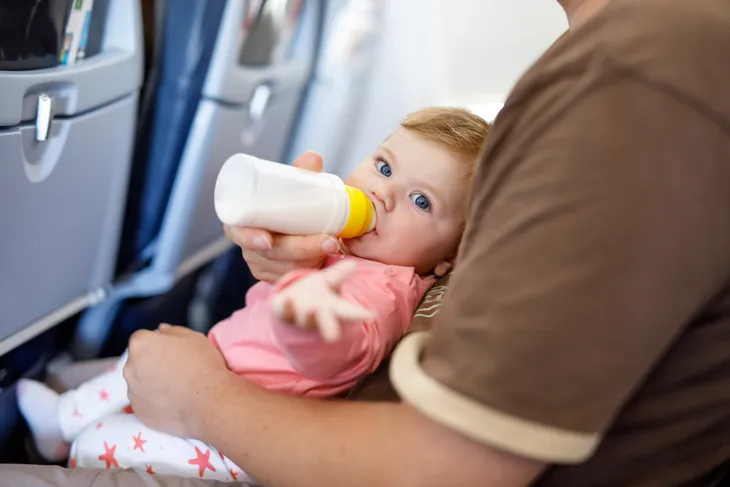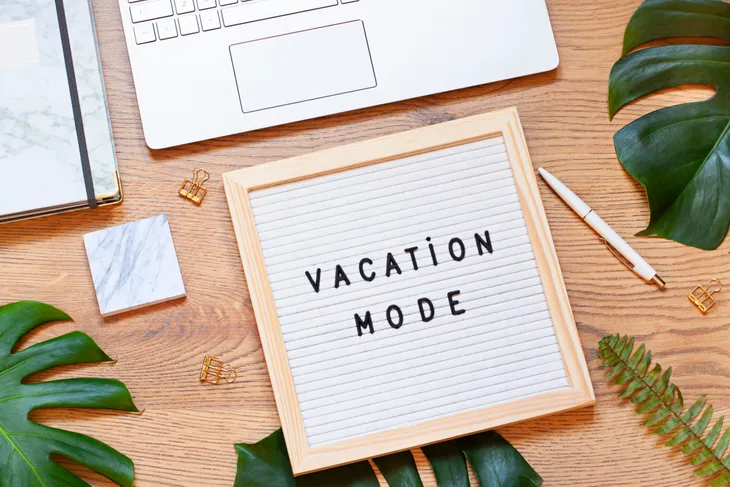- Set realistic expectations and plan ahead to make vacations less stressful before they start.
- Involve children in some of the decision-making, and keep them advised of the schedule.
- Plan activities and stress relievers for long car trips and plane rides.
- Bring along family and utilize hotel caregivers and kids’ programs to get more “me time.”
- Take advantage of naps and early bedtimes.
Vacations are meant to be a time to relax and unwind, but if you’re a parent, that trip you’ve been planning and looking forward to can quickly turn into multiple days of tension and stress. But that doesn’t mean that traveling with kids has to be so difficult.
As long as parents are prepared, vacationing with kids can be somewhat relaxing! We’ve come up with 12 easy tips to help parents let their guard down, kick back and relax while vacationing with kids….
Don’t Imagine an Instagram-Worthy Getaway
Stress sometimes comes from setting unrealistic expectations. Instagram influencers are part of the problem. When you scroll through your feed, you see so many photos of beautiful families all enjoying gorgeous landscapes and memorable activities, and it’s easy to imagine yourself having the same experiences and sharing the same memories. Just remember that what you see on Instagram isn’t the full story.
Photos and short video clips capture a single moment in time. You have no idea how much work it took to stage what you’re viewing. Before you even begin to plan, tell yourself the purpose of your vacation is to get away together, and accept that things will go wrong. If you don’t expect perfection, you’re less likely to get stressed.
Choose Time and Location Carefully
Choosing your destination and the dates for your trip can make or break your vacation. If you’re traveling with small children, pick a location that isn’t more than one or two time zones away to keep schedules as close to normal as possible.
Pick a place that has plenty of child-friendly activities or amenities, and do research to find out what the weather is like and when the busiest travel times are throughout the year. Traveling during the off-season means fewer crowds and may even save you money. Also, try to avoid times when temperatures are extremely hot or cold.
Create an Itinerary
Many people like to leave everything to chance when they travel, to go with the flow and have unexpected adventures. This may be fun if you’re traveling alone or with your partner or a group of adult friends, but it’s a recipe for disaster when you’re headed somewhere with children.
Make an itinerary for each day of your trip. Decide what you’ll do, and leave free time for naps and breaks. Research area restaurants to find ones that have menu choices your kids will eat, and make reservations ahead of time as needed.
Plan for the Flight or Car Trip
Getting to your destination and home again might be the most stressful part of your trip, but if you plan ahead, you can reduce some of the stresses of traveling. Lower the likelihood of in-flight ear pain by keeping your child hydrated and allowing them to chew gum or suck on sugar-free candy if they’re old enough to do so.
To try to keep car sickness at bay, make sure the vehicle is well-ventilated, and have your child look out the window when they complain of an upset tummy. Whether you’re driving or flying, bring along at least one activity for every 1- to 2-hours of the trip. Give the activities to your child one at a time to keep them entertained.
Narrate the Day for Your Child
Traveling disrupts children’s usual routines, and this can lead to feelings of anxiety and powerlessness and set the stage for tantrums. Although you may not be able to keep to your child’s usual schedule away from home, you can help them feel more secure. In the morning, tell them everything you plan to do for the day. Then, narrate the day for them, so they can prepare for transitions.
For instance, you can say “After we finish breakfast, we’re going to the beach, and you can swim and build a sand castle for me.” Another example is: “We’re going to go on three more rides, and then we’re leaving the amusement park for today.”
Bring Along or Find Reinforcements
Having an extra set of hands can help tremendously, particularly if you’re traveling with more than one child. Bring grandparents, a sibling, or a close family friend along for the trip. Give your extended family a chance to have some relaxation time of their own, and then ask them to watch your kids while you head to the spa or enjoy a dinner out.
If you’re staying at a hotel or resort, inquire about babysitting services, or take advantage of kids’ club activities, so you can get a break.
Work as a Team With Your Partner
If your partner is accompanying you on the trip, go into the vacation with a team mindset. Take turns being the one “on-duty” in the morning, so the other can sleep in. Have the other person be responsible for handling nighttime feedings, diaper changes, and other parenting responsibilities.
When you feel your stress level start to rise, tell your partner how you’re feeling, and take a quick break. Be willing to do the same when they’ve reached their limit, too.
Be Flexible
Even when you carefully plan your days, things may go wrong during your vacation, making it important that you’re willing to be flexible. If your child is cranky or tired, be willing to forego an activity or shift your schedule around, so you can do it on a different day.
Put together a few backup plans for fun activities you can enjoy in your hotel or rental home in case bad weather rolls in or your child needs a down day.
Make Nap Time and Bed Time “Me” Time
If you’re on the go a lot during your vacation, your child will likely need to nap and may be ready for bed earlier at the end of the day. When they close their eyes, permit yourself to focus on “you.”
Have room service deliver a romantic dinner for you and your partner, or sip a cocktail while you relax on the balcony. Take a hot bath, schedule an in-room spa treatment or simply curl up in bed and enjoy a nap, too.
Schedule in Splash Time
When choosing accommodations, look for somewhere that has an indoor or outdoor pool, and allow some time to visit it every day. While your child swims, you can relax on a deck chair, read a book or enjoy adult conversation with your partner.
If the pool is outside, don’t forget to slather on a waterproof broad-spectrum sunscreen with an SPF of 30 or higher 30-minutes before they start to splash. After all, a sunburn can quickly add unwanted stress to your trip.
Leave Work and Social Drama Behind
Sometimes, vacation stress has nothing to do with your kids. Instead, it comes from keeping too connected to what’s going on at home. Before you leave, let people at your workplace know you’re not going to be available while you’re away, and resist the urge to check voicemail or email during your trip.
Also, consider waiting to post those precious photos to your social feeds until you get back home. Not only will it give you something to look forward to, but it can also prevent you from doom-scrolling your feeds or feeling disappointed when a photo doesn’t instantly start racking up likes.
Give Yourself an Extra Day
When you get home from your trip, send your child back to school or daycare, but don’t head back to work immediately. Allow yourself at least one extra day to have the house to yourself. You can use that time to unpack, do laundry or simply spend it resting and recovering from your trip.
Returning home from a trip on a Thursday and taking Friday and the weekend off can give you even more decompression time before you return to the daily grind.















